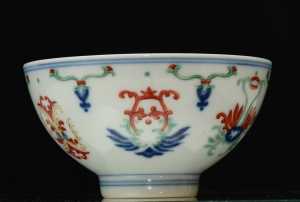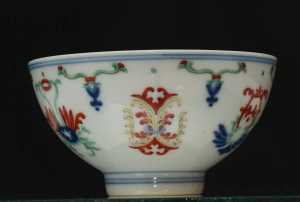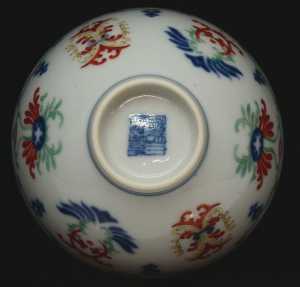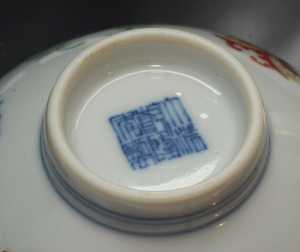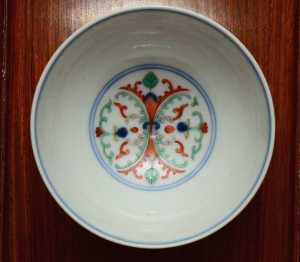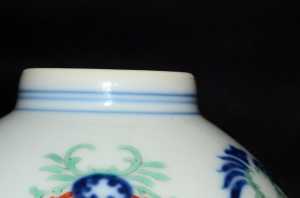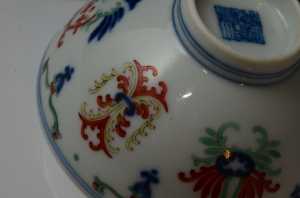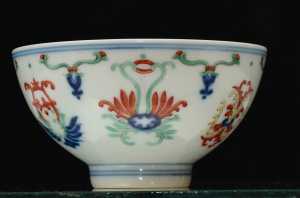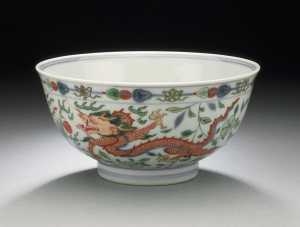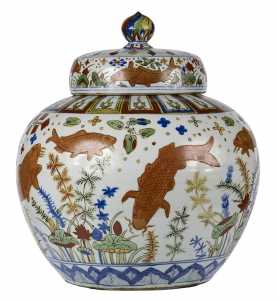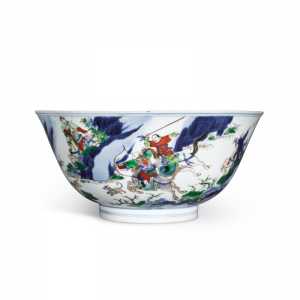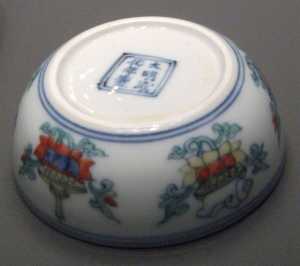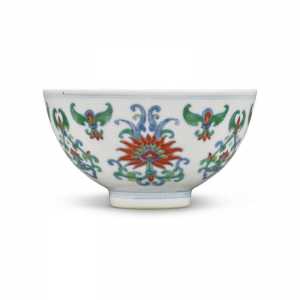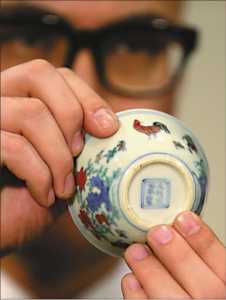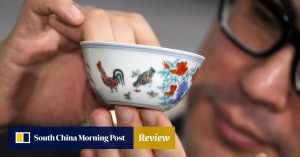The Chinese and Asian Art Forum. For Fans, Collectors and Dealers.
 Basic Rules For the BidAmount Asian Art Forum: Talk about whatever you want. You can even discuss and offer things that are for sale if they are authentic. Maximum image file size per post is 2 MB. Images of 700pxl x 700pxl are optimal if saved at a medium resolution. Be respectful of others and enjoy yourself. Click the YouTube link for a brief tutorial on using the forum. You can also EMBED Videos by cutting and pasting from You-Tube, Vimeo etc.
Basic Rules For the BidAmount Asian Art Forum: Talk about whatever you want. You can even discuss and offer things that are for sale if they are authentic. Maximum image file size per post is 2 MB. Images of 700pxl x 700pxl are optimal if saved at a medium resolution. Be respectful of others and enjoy yourself. Click the YouTube link for a brief tutorial on using the forum. You can also EMBED Videos by cutting and pasting from You-Tube, Vimeo etc.
NOTE: To post an item or add a new post, click open the category title from the FORUM LIST, and CLICK the Blue ADD TOPIC button.
hello my dear dealers and collectors, long time no see!
Today I have found this beautiful chinese bowl that have a Qialong mark on it, I want to hear your opinion, and if it's worthy of anything if nothing, personally I like it, the base is okey with a an iron oxid line on it, well poted and well decorated and the seal mark is okey.
what do you think?
@jeremy @bartholin @julia @shinigami @lep @johnshoe @ronm @sharonp @short-dong @greeno107 @jbeer2121 @brettm @john-steward
@clayandbrush @tam18 @xin_fawis @plcombs@watership @nicdan @ming1449 @gfhandel
I think it would be classed as Doucai. However there does not appear to be an under glaze blue beneath the enamels. This might be a something the more experts could look at. As would it no then be an imitation of a Doucai. If it is a real Doucai it would be worth 40,000
To be Doucai or To be Wucai that is the question.
Wucai
Wucai (五彩, "Five colours", "Wuts'ai" in Wade-Giles) is a style of decorating white Chinese porcelain in a limited range of colours. It normally uses underglaze cobalt blue for the design outline and some parts of the images, and overglaze enamels in red, green, and yellow for the rest of the designs. Parts of the design, and some outlines of the rest, are painted in underglaze blue, and the piece is then glazed and fired. The rest of the design is then added in the overglaze enamels of different colours and the piece fired again at a lower temperature of about 850°C to 900°C.
It has its origins in the doucai technique. The usual distinction made with doucai, which also combines underglaze blue with overglaze enamels in other colours, is that in wucai only parts of the design include blue, and these cover wider areas, and are often rather freely painted.
In doucai the whole design is outlined in the blue, even if parts are overlaid by the enamels and invisible in the finished product. Some parts may also be painted in the blue.
However, this is not true of all pieces classified as doucai, especially from the 18th century onwards. Fragments of incomplete examples, only done in blue, have been excavated from waste tips at the kiln.
The next development, Famille verte (康熙五彩, Kangxi wucai, also 素三彩, Susancai), adopted in the Kangxi period (1662–1722), uses green and iron red with other overglaze colours developed from wucai, normally without any use of underglaze blue.
Wucai images
https://www.sothebys.com/en/search?query=wucai&tab=objects
Doucai
Doucai (Chinese: 斗彩; Wade–Giles: tou-ts'ai) is a technique in painted Chinese porcelain, where parts of the design, and some outlines of the rest, are painted in underglaze blue, and the piece is then glazed and fired. The rest of the design is then added in overglaze enamels of different colours and the piece fired again at a lower temperature of about 850°C to 900°C.
The style began in the 15th century under the Ming dynasty in the imperial factories at Jingdezhen, and its finest products come from a few years in the reign of the Chenghua Emperor, mostly small pieces like the famous Chicken cups.The style was discontinued after a few decades, as a suitable overglaze blue was developed, but later revived under the Qing dynasty.
It is not to be confused with the wucai style, which was a related early technique for polychrome painting.Doucai can be translated as "contrasted colours", "fitted colours", "colours which fit together" or "dove-tailed colours".
Doucai images
https://www.sothebys.com/en/search?query=doucai&tab=objects
@short-dong The bowl from Sotheby’s is doucai, as you can see all line work is done in underglaze blue.
That is not the case with the bowl Ibraham posted. You can see a few elements done in underglaze blue, but the remaining elements in famille verte enamels with either black line or iron red.
@short-dong The bowl from Sotheby’s is doucai, as you can see all line work is done in underglaze blue.
That is not the case with the bowl Ibraham posted. You can see a few elements done in underglaze blue, but the remaining elements in famille verte enamels with either black line or iron red.
Yes, that is something i raised. It appears to be trying to be in the style of Doucai but has no underglaze blue under the enamel unlike the Sotheby's one. I am not very proficient in this area
it's very small about 10cm(4inch) in diameter and 5.5cm(2.16inch) in height, @julia I think that's why it's different in shape.
thank you @sharonp @short-dong, I think it would be classified as Wucai as @greeno107 pointed out, but I'm not sure.
have you guys seen anything close to it?
I wondered if yours might be later, the shape seems more like earlier pieces or later ones, like the Sotheby's bowl above. Also, most wucai qianlong bowls I have found don't have this style of decoration.
So I did a bit of searching and found this, which could be a copy, but it makes me feel you should be careful, especially if there is a qianlong price involved.:
https://www.rm-auctions.com/en/asian-arts-april/10068-a-chinese-doucai-bowl-republic-20th-c?
I wondered if yours might be later, the shape seems more like earlier pieces or later ones, like the Sotheby's bowl above. Also, most wucai qianlong bowls I have found don't have this style of decoration.
So I did a bit of searching and found this, which could be a copy, but it makes me feel you should be careful, especially if there is a qianlong price involved.:
https://www.rm-auctions.com/en/asian-arts-april/10068-a-chinese-doucai-bowl-republic-20th-c?
Thanks Julia.
Ibrahim should be careful with these.
I found 2 more Doucai in your link, and these sold for $300 for the pair which might say alot, making Ibrahims only worth $150 and that is if it sold on RM auctions. I am not seeing a profit in this and as there is no blue underglaze on Ibrahims, it should be passed unless anyone still feels it is wucai.
I think we have not found sufficient close enough matches to Ibrahim's bowl to raise concerns quite yet, except Julia's example that copies the style of rendering.
However, Julia's example is quite an obvious fake, poorly rendered, wrong enamel colors, and a bad mark.
The Daoguang example is an apples with oranges comparison, different style of enamel, different presumed period, different design.
The Sotheby's example, which bears a Yongzheng mark but was sold as 20th c., sold for $69,300 USD, shares the same quality of rendering, but different design, enamels, and period mark. However, we know that designs were shared between the Yongzheng and Qianlong, but with modifications of course.
Let's give the bowl a chance to prove itself, one way or another, and find some more closely related matches.
On that note, I do think if we are looking at doucai examples instead of wucai, we are barking up the wrong tree.
I think we have not found sufficient close enough matches to Ibrahim's bowl to raise concerns quite yet, except Julia's example that copies the style of rendering.
However, Julia's example is quite an obvious fake, poorly rendered, wrong enamel colors, and a bad mark.
The Daoguang example is an apples with oranges comparison, different style of enamel, different presumed period, different design.
The Sotheby's example, which bears a Yongzheng mark but was sold as 20th c., sold for $69,300 USD, shares the same quality of rendering, but different design, enamels, and period mark. However, we know that designs were shared between the Yongzheng and Qianlong, but with modifications of course.
Let's give the bowl a chance to prove itself, one way or another, and find some more closely related matches.
On that note, I do think if we are looking at doucai examples instead of wucai, we are barking up the wrong tree.
Thank you to Julia for finding that copy of the Bowl. That is quite amazing how you do that.
I agree with Greeno the Bowl is a copy and it has no underglaze blue under the enamel which you can see is present in the Sothebys. Nonetheless similar copies as Julia has discovered have little value.
It does not help that sothebys has started to call everything 20th century, but taken with RM auctions and Julias appraisal that the shape is not good for the Qianlong period and does not feel it has the common style of decoration found on Wucai. Then unless shown otherwise the bowl is 20th century and possibly neither Doucai or Wucai.
However considering the Ming era 'Meiyintang Chicken Cup' sold for 281 million Hong Kong dollars. ($36 million US Dollars) and The sotheby's 20th Century example with Yonghzeng mark sold for $70,000 dollars then i understand why Greeno does not want to give up on this one but considering the RM Auction 20th Century examples are a almost mirror image of Ibrahims bowl and only sold for about $150 dollars then i am not sure this that hidden treasure, and while it might be something, it does not have the underglaze blue and while not all Doucai have underglaze blue under the enamel after the 18th century, Julia does not feel this fits that time period.
So not likley to be a treasure......
I am no expert, I just talk about what I see and refer it to what I have learnt on here and elsewhere. I probably know less than most people and I agree the bowl could be a copy, as I said at the time, but it serves a purpose as Ibrahim asked if anyone had found anything similar. His could be a very nice Republic bowl, it may be earlier, I just have some doubts about the shape and style of decoration if this is qianlong wucai.
Hi Julia
You are quite a bit better than you give yourself credit, but I completely empathise with not feeling right in principle to give an opinion based only on our own self learned knowledge, but at the end of the day it is the responsibility of the poster asking to properly research their potential purchase, or item. Failing that they can always ask Peter for a professional appraisal for a $12. I am going to maybe do a course on Aisian Art just to put things in perspective, but no matter the expert, everyone has reservations giving advice and we all make mistakes no matter our expertise. I would prefer people are in the process of learning about asian art and asking questions than simply seeking appraisals which are hard for even the best experts.
This is the Ming era 'Meiyintang Chicken Cup' that sold for 281 million Hong Kong dollars. ($36 million US Dollars)
Thanks for visiting "The BidAmount Asian Art Forum | Chinese Art"
If you sell on eBay, or have a shop feel free to post images and descriptions and links.
Check back often for discussion about the latest news in the Chinese art and antique world. Also find out about the latest Asian art auctions at Sotheby's, Christie's, Bonhams and Tajans.
Auction results for: fine porcelain, ceramics, bronze, jade, textiles and scholar's objects. As well as Japanese, Thai, Vietnamese and other Asian cultures.
Thank you,
Peter Combs
Topics and categories on The BidAmount Asian Art Forum | Chinese Art
Kangxi vases, Kangxi dishes and chargers, Kangxi ritual pieces, Kangxi scholar's objects, Qianlong famille rose, Qianlong enamels, Qianlong period paintings, Qianlong Emporer's court, Fine porcelain of the Yongzheng period. Chinese imperial art, Ming porcelain including Jiajing, Wanli, Xuande, Chenghua as well as Ming jades and bronzes.
The BidAmount Asian Art Forum | Chinese Art
A free Asian art discussion board and Asian art message board for dealers and collectors of art and antiques from China, Japan, Korea, Thailand, Cambodia, Vietnam and the rest of Asia. Linked to all of the BidAmount Asian art reference areas, with videos from plcombs Asian Art and Bidamount on YouTube. Sign up also for the weekly BidAmount newsletter and catalogs of active eBay listing of Chinese porcelain, bronze, jades, robes, and paintings.
The art of calligraphy - and for the ancient Chinese it certainly was an art - aimed to demonstrate superior control and skill using brush and ink. Calligraphy established itself as one of the major Chinese art forms during the Han dynasty (206 BCE - 220 CE), and for two millennia after, all educated men were expected to be proficient at it.
The Museum’s collections of Asian art span nearly five millennia and encompass the cultures of China, the Himalayas, India, Japan, Korea, and Southeast Asia. In 2007, the Museum launched an initiative to create dedicated galleries for the collection, beginning with a gallery for the arts of Korea ...
Chinese art is full of symbolism, in that artists typically seek to depict some aspect of a totality of which they are intuitively aware.
China Online Museum is the finest online museum of Chinese art. It features Chinese calligraphy, painting, ceramics, bronzes, carving, and other artworks.
Chinese Ceramics & Works of Art. Overview Upcoming auctions Contacts Auction results ... Christie’s sales of Chinese ceramics and works of art showcase centuries of Chinese history. Held throughout the year in London, New York, Paris and Hong Kong, they attract a wide audience of collectors and connoisseurs vying for pieces as diverse as ...
Explore Asian Art Week. Contact the Specialist Department. Chinese Paintings ... Senior Specialist, Head of Sale. [email protected]. Tel:+1 212 641 5760. Bid in-person or online for the upcoming auction:Fine Chinese Paintings on 10 September 2019 at New York. Bid in-person or online for the upcoming auction:Fine Chinese Paintings on 10 ...
Discover an abundance of must-see art from all corners of a vast continent at Christie’s NY Asian Art Week. From contemporary classical and Chinese paintings to works with exemplary provenance from the Art Institute of Chicago, our Rockefeller Paza galleries will be full of ancient treasures and contemporary masterworks in a salute to the vibrant arts of Asia.
Sold to benefit The Art Institute of Chicago’s Asian Art Acquisition Fund, the sale features 84 lots with a focus on Ming and Qing porcelains, and offers a rare insight into the taste for collecting Chinese ceramics and works of art in the Midwest from the end of the 19th century through the 1980s. Highlights include two Wanli wucai garlic-head vases, a Qianlong mark and period, blue and ...
Specialist, Chinese Paintings, Christie's London Dr Malcolm McNeill is a Specialist in Chinese Paintings at Christie’s, based in London. He previously worked as an assistant curator of the Chinese collections and the Victoria and Albert Museum in London, as a researcher at the British Museum, and as a translator and tour guide at the National Palace Museum in Taipei.
The Christie's Education 2020 Conference: The Chinese Art Market 18 Jun 2019 Christie’s Education is delighted to announce our first international academic conference in Asia which will take place in Hong Kong from 26-27 November 2020 at the Hong Kong Convention and Exhibition Centre and will run in parallel with Christie’s Hong Kong Autumn Auctions.
The summer Chinese Art sale in Hong Kong will feature works of art from several private collections, including Qing porcelains and textile from the collection of the legendary Chinese art dealer A. W. Bahr (1877–1959), fine gilt bronze Buddhist sculptures from an old Hong Kong collection, an East Asian collection of Qing dynasty wine cups and jades, and a Japanese collection of Song ceramics ...
Sotheby's Chinese Works of Art Department holds two auctions each year in London, New York, Hong Kong and Paris.
Chinese Art - View Auction details, bid, buy and collect the various artworks at Sothebys Art Auction House.
With more than 340 Chinese works of art dating from the Neolithic to the Republic periods, highlights of this sale include a selection of Qing Imperial monochromes from the collection of Arnold and Blema Steinberg, early ceramics from the Art Institute of Chicago and Chinese porcelain and works of art from the collection of Henry Arnhold.
Results: Sotheby's Asia Week achieved $52.4 million in six strong auctions, exceeding pre-sale estimates. With 76.5% of lots sold and 60.3% of lots surpassing high estimates, the Asian art sales at Sotheby's indicate continued collector interest in the finest works of art from China, India and and the Himalayas.
Today's sale of Important Chinese Art will proceed as planned with sessions at 10 AM and 2 PM EDT. Sotheby's will be monitoring the weather conditions throughout the day and will be available to coordinate alternative bidding options should conditions make it difficult for clients to attend the auction in person.
Bonhams Chinese Art department is renowned for offering the finest works of art representing the richness and breadth of China's artistic heritage, particularly Imperial porcelain, white and spinach green jades, cloisonné and Buddhist art. Specialised international auctions are held globally, including London, Hong Kong and San Francisco.
Bonhams : Chinese Works of Art We use cookies to remember choices you make on functionality and personal features to enhance your experience to our site. By continuing to use our site you consent to the use of cookies. Please refer to our privacy and cookie policies for more information.
Bonhams Fine Art Auctioneers & Valuers: auctioneers of art, pictures, collectables and motor cars. We use cookies to remember choices you make on functionality and personal features to enhance your experience to our site. By continuing to use our site you consent to the use of cookies. ... Chinese Art (US) General enquiries
Bonhams : Fine Chinese Art We use cookies to remember choices you make on functionality and personal features to enhance your experience to our site. By continuing to use our site you consent to the use of cookies. Please refer to our privacy and cookie policies for more information.
Bonhams Fine Art Auctioneers & Valuers: auctioneers of art, pictures, collectables and motor cars Bonhams : Asian Art We use cookies to remember choices you make on functionality and personal features to enhance your experience to our site.
Bonhams are international auctioneers of fine Chinese and Japanese art. We specialise in rare Imperial and Export Chinese ceramics and works of art, as well as Japanese ceramics, fine and decorative works of art from the Neolithic Period to the 20th century. View on map
Bonhams Fine Art Auctioneers & Valuers: auctioneers of art, pictures, collectables and motor cars. We use cookies to remember choices you make on functionality and personal features to enhance your experience to our site. By continuing to use our site you consent to the use of cookies. ... Asian Art Bonhams. Work. 22 Queen St.
